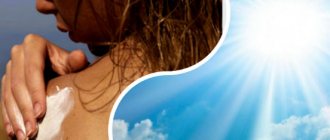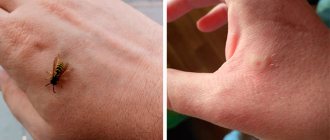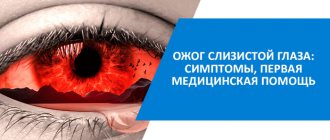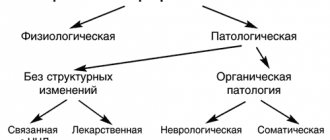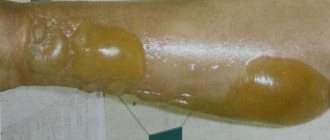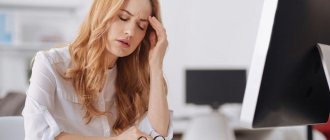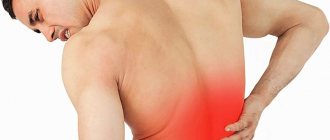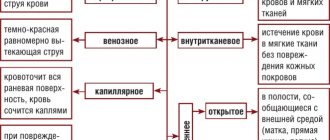A burn is an acute injury to the skin and underlying tissues. There are different types of burns: thermal, electrical, chemical, radiation. The most common burn at home is boiling water. The severity of tissue damage from a boiling water burn depends on its location.
The easiest way to burn your hand with boiling water is to accidentally spill freshly boiled water. It is more difficult to get burned on the face, neck, inner shoulder and thighs, but in these areas the damage will be deeper even with short-term exposure to hot water.
Burns on the leg (especially in the foot area) and on the back are less likely to be deep and heal faster. A facial burn is life-threatening, since such injuries are often combined with damage to the eyes, mouth, and respiratory tract.
Determining the degree of burn
There are four main degrees of burn:
- 1st degree burn - only the upper layer of the epidermis is affected; slight redness and swelling are noticeable, which completely disappear after a few days.
- A 2nd degree burn is a deeper injury to the skin, resulting in blistering, redness and swelling of the skin. The burn heals in 10-12 days if the wounds from the blisters do not become infected.
- 3rd degree burn - not only the skin is affected, but also soft tissues; the opening of the blisters is accompanied by the active formation of scabs, purulent inflammation often forms, and scarring occurs as the burn heals.
- A 4th degree burn is severe and deep tissue damage that occurs with prolonged exposure to boiling water. Burns of this degree are most often accompanied by a painful shock; necrosis (areas of dead skin) appears on the skin.
A boiling water burn is usually a first or second degree burn, but if there are signs of a higher degree burn, you should immediately consult a doctor.
Mandatory medical care is also required if the 1st degree skin burn is more than 10% of the body surface, and the 2nd degree burn is more than 1% of the body surface. How to determine the area of the burn yourself? Use the “rule of nines” or “rule of the palm.”
According to the “rule of nines”, the entire surface of the body is conventionally divided into multiples of 9 areas (as a percentage):
- Each hand corresponds to 9%
- Head – 9%
- Torso front and back (chest, back) – 18% each
- Each leg – 18%
- The perineum is only 1%, but such burns are among the most dangerous and painful.
According to the “rule of the palm,” its area is taken to be 1% of the area of the entire body. Just do not put your hand directly on the damaged skin when determining the size of the burn!
The severity of a boiling water burn also depends on its location:
- Most often in everyday life, you can get a burn on your arm or leg with boiling water if you spill water carelessly - such injuries are not the most dangerous if the burn is small.
- A burn to the torso is more painful and serious, especially if the lesion is strong enough: there is a possibility of injury to internal organs.
- The most dangerous burns from boiling water are the head and face. Such lesions affect the eyes, mouth, respiratory tract, and hearing organs.
If you have a scalp burn, consult a doctor immediately! We also recommend calling an ambulance if a child is burned by boiling water. The skin of children is thinner than that of adults and does not yet have a protective layer of sufficient thickness. Therefore, even a seemingly insignificant burn can turn out to be serious.
Why is it important to take immediate action immediately?
Any delay causes pain to the victim, which increases every second.
If the burn is large-scale, then the person may even lose consciousness from pain shock. Children often get burned due to adults' negligence . A child's skin is more delicate, so the tissue is damaged even by exposure to hot water of about 65-70 ℃.
In case of a large-scale burn, if emergency assistance is not provided, the child may experience a complex disruption of the functioning of vital systems. For infants, damage to even a small part of the body will be critical.
Burns from boiling water: what to do?
First aid for a burn with boiling water - we provide it at home
- The burned area must be placed under cold running water as quickly as possible and kept running for at least 15-20 minutes. This will significantly reduce skin damage and pain.
- Do not use ice water for these purposes to avoid hypothermia. It is better to wrap the victim in a blanket while the burn cools.
- If it is not possible to provide access to running water (for example, after a burn to the body with boiling water, it is not always convenient to place it under a stream from a tap), then use a bowl of cold water where you can place the affected part of the body, or apply ice wrapped in a cloth. If the burn is extensive, you can wrap the victim in a damp sheet.
- Remove clothing: If it cannot be removed quickly and painlessly, it should be cut. Do not allow clothing to stick to the affected skin. This can be done directly during the process of cooling the burn - in water it can painlessly “unstick” from the skin.
- It is necessary to remove clothing and wash the affected areas as carefully as possible, in no case allowing the blisters caused by a burn with boiling water to be pierced. Open blisters can cause infection to enter the body. This should be done by a doctor.
- After washing the burn with boiling water, cover it with a sterile, damp bandage. A first degree burn can be treated with Panthenol or Olazol. It makes sense to do this before bubbles form. Cover the burn site with a sterile bandage to prevent the wound from becoming infected.
- Give the victim plenty of water; If the pain is severe, it is better not to endure it, but to take a painkiller tablet.
Wait with the victim for the arrival of doctors to report his condition.
Other serious types of damage
Contrary to popular stereotypes, the most dangerous burns are diluted rather than concentrated with acids. The concentrated acid immediately causes protein coagulation, which leads to intense scarring and prevents deep burns.
Treating acid burns should first wash the charred surface with a 1-2% aqueous soda solution and then with a 0.5% aqueous ammonia solution.
Hydrofluoric acid
Due to the general toxicity of the compound, combustion of hydrofluoric acid (for example, for glass etching) is one of the heaviest. At the same time, hydrofluoric acid almost does not burn!
After contact with hydrofluoric acid on the skin, the person should be washed with an emulsion of magnesium oxide in glycerin (if in hand) or running water and immediately taken to the hospital. Burns from boiling water of the third degree and this variety can be especially severe and require surgical intervention by specialists.
Strong alkali
Caustic soda is one of the most dangerous. Alkali quickly penetrates the skin and causes saponification of fats in the subcutaneous tissue, which leads to the alkali burning strongly, with a large amount of tissue infiltration, accompanied by severe swelling and purulent complications.
Burn caustic should be treated with a 1-2% solution of lemon or acetic acid.
Treatment of burns with insecticides and herbicides
Burn areas should be washed alternately with gasoline and ethanol. The victim was then rushed to hospital to be administered antidotes.
Phosphorus
Ideally, the burned area should be submerged in water (to prevent air from entering the phosphorus and causing spontaneous combustion) or maintained under a strong flow of water. This process is similar to how to get rid of burns from boiling water.
You should try to remove all phosphorus particles and then cover the burn with a bandage containing 5% potassium permanganate (this prevents phosphorus from burning).
Quicklime
Lime burning is the only place where water is not allowed to wash away the burned area. The damaged surface should be covered with a thick layer of fat, and the victim should be taken to the hospital. This includes burns to the abdomen with boiling water.
However, no matter what chemical injury is caused, whether the active antivenom agent is neutralized or not, proper treatment of chemical burns reduces drying of the wound to remove excess infiltration of preservatives and improve blood circulation to the affected area. Accelerated application of tissue regeneration.
What not to do
- Do not tear off stuck-on clothing if it does not come off after soaking. In this case, it is better to wait for the arrival of doctors who can do this under sterile conditions.
- Do not apply iodine or brilliant green to the burn - these products are too aggressive and dry out already irritated skin. In addition, it will be more difficult for the doctor to determine the extent of the damage if the entire burn site is green or brown.
- Do not treat the skin directly after a burn with fatty products, oils, creams, or sour cream. The oily environment increases the local body temperature, and a film forms on the surface of the skin, which prevents the burn from cooling naturally.
- Do not burst blisters after a burn with boiling water yourself.
- If you doubt whether to apply a bandage and how to do it, it is better not to do it. A bandage that is too tight can cause swelling.
A 1st degree burn does not require any action and will heal in a couple of days. You can speed up recovery by taking care of your skin, moisturizing and nourishing it.
Immediately after first aid, you can apply a medicated bandage to the skin. There are special napkins for sale after burns with an analgesic effect - use them or make a bandage yourself by soaking the gauze or bandage with anti-burn agent. Use La Cree cream to soothe irritated skin. It contains panthenol, so the cream is perfect for treating burns with boiling water.
A 2nd and 3rd degree burn with minor damage still requires contacting a medical facility. It is necessary to carry out some procedures to disinfect the burn surface, which are performed by a doctor.
The skin at the burn site is anesthetized, treated with an antiseptic, exfoliated epidermis, dirt and remnants of clothing are removed, the doctor carefully pierces the blisters after the burn, removing the liquid and leaving a thin skin to protect the wound. A bandage with bactericidal ointment is applied to the burn. Further treatment is carried out independently or under the supervision of a doctor, if it is necessary to replace the bandage every 2-3 days until the burn is completely healed.
Serious 3rd and 4th degree burns and burns of more than 30% of the body are treated exclusively in a hospital. The first actions of doctors are aimed at removing dead tissue. If necessary, this is done surgically. The patient is under the supervision of doctors, they eliminate the consequences of burn shock, which causes intoxication of the body and damage to internal organs.
After the damaged skin is rejected, the formation of a scab begins. At this stage, it is important to prevent the development of inflammation. Depending on the location of the burn and the degree of skin damage, treatment is carried out in an open or closed manner; the affected areas of the body are lubricated with an antiseptic ointment 3-4 times a day.
When to see a doctor
Self-treatment of a burn with boiling water is only possible for minor injuries. You will need specialist help if:
- the area of the body affected is more than 5-10%;
- burns of the second degree and higher;
- severe swelling appeared on the second day after the injury along with high fever;
- the patient complains of chills and severe pain;
- inflammation or suppuration;
- presence of blisters.
Drug therapy is primarily aimed at relieving pain, eliminating possible infectious infection and regenerating damaged tissue.
Effective remedies for burns
First of all, you must remember that the most important thing in case of a burn with boiling water is to immediately provide first aid.
After the initial treatment of the burn, you can use Panthenol, Olazol or other special anti-burn products. Drugs of this type prevent the spread of burns deep into the tissue, speed up recovery and relieve pain. The faster you apply them, the more effective they will be. But they can be used for 1st and 2nd degree burns before blisters appear.
Further therapy will be aimed at eliminating the consequences of the boiling water burn. It is important to prevent infection, relieve swelling, eliminate redness and a feeling of tightness of the skin.
After providing first aid for first-degree burns, you can use cosmetics to care for the affected skin or creams for burns. La-Cri cosmetics contain panthenol and other substances that reduce the unpleasant symptoms of burns and promote healing.
Extracts of licorice, string, walnut, bisabolol and other natural ingredients make La Cree creams, emulsions and gels not only effective, but also safe. They do not contain hormones, do not cause allergies and can be used for additional skin care after treatment of burns from boiling water in both children and adults.
Complications - burn disease
Burn disease - if hot water is exposed for a long time, and a large area of damaged skin can cause a dangerous complication. Thus, the body reacts to the traumatic effects of high temperatures. Such consequences can include a burn of the hand with boiling water and other areas of the skin.
As a rule, these consequences are caused by improper first aid, which leads to other consequences (for example, the formation of scars even after treatment from specialists). Only a specialist knows what to do in case of a severe burn from boiling water.
Before determining how to treat a burn with boiling water, it is necessary to take into account the location of the skin lesion and the stage of the lesion. Burn disease has 4 stages:
- State of shock: lasts 3 days. This type changes the water-electrolyte balance of the body and makes changes in the level of acid-base balance, which significantly impairs kidney function.
- Acute burn toxemia: the result of disruption of normal blood flow and kidney function, lasting up to 2 weeks. The absorption of the toxin into the affected area begins. If the kidneys cannot return to normal function (in the case of severe burns), acute kidney failure may occur.
- Septicotoxemia: this development of events is possible with injuries of severity level 3, it is associated with a cycle of starting wound cleansing. There are malfunctions in various organs, purulent poisoning: intestinal ulcers, pneumonia. The reason here is not microorganisms, but blockage of small blood vessels due to general circulatory disorders.
- Rehabilitation: the final stage of burn disease continues until complete recovery.
Currently, minor burns are treated by general surgeons, but severe burns are treated in specialized burn centers.
A burn to the leg with boiling water and damage to other areas is often characterized by the stages described. They do not depend on localization, proceeding in most cases the same way.
Clinical researches
The effectiveness, safety and tolerability of the product for children and adults has been proven by a clinical study. The product is also suitable for daily skin care of children with mild to moderate forms of atopic dermatitis and during remission, accompanied by a decrease in the quality of life of patients. As a result of therapy, a decrease in the activity of the inflammatory process, a decrease in dryness, itching and flaking was noted.
La-Cri cosmetics, according to research results, are recommended by the Russian Union of Pediatricians.
Consumer Reviews
Almara (ladiesproject.ru)
“This summer I learned about a series of products for sensitive, allergic and problem skin from La Cree. It covered my face with some small bubble stuff, and my mother recommended this cream, now I use it from time to time. The cream is sold in pharmacies, there are several options (for example, for dry skin or vice versa - anti-acne matting), I bought it for sensitive skin. The product is recommended for:
- skin conditions accompanied by irritation, inflammation and itching;
- after excessive sun exposure;
- irritation and itching after insect bites and plant burns;
- inflammatory manifestations on the skin in children, diaper rash.
Among the advantages of the drug, the manufacturer lists a safe non-hormonal complex composition based on natural ingredients (extracts of string, violet, walnut, bisabolol, panthen, avocado oil), the possibility of long-term use, including for children.
The cream comes in an interestingly designed tube (I mean the color scheme, the tube itself is ordinary). The product also came in a cardboard box with instructions for use, but I threw it all away a long time ago. The tube is quite soft, the lid is a regular screw-on one. I have no complaints, the product is easy to obtain. The cream itself is also unusual - quite dense, light gray-brown in color, with some grains. In the photo it looks like a foundation, but when distributed it is completely transparent. The smell is rather herbal, not strong, practically unnoticeable. Due to its dense texture, it does not spread very easily over dry skin; I always spray my skin with floral water first. I rub the cream sausage in my palms and apply it to my face and neck. The cream is absorbed very quickly and does not leave any stickiness, film or other unpleasant sensations. It doesn't make your face look oily. I don’t use the cream often, but I periodically return to it when pimples or allergic reactions appear. In my opinion, the product really helps. The redness goes away and the allergy goes away. Local inflammation goes away much faster, or at least does not increase during the day, as if I were using a regular cream or, especially, foundation/bb/powder. I applied it a couple of times to the effects of mosquito bites. They are often accompanied by an allergic reaction, even without scratching, a large pink lesion appears. With this cream, the bites are almost like those of normal people, without pink bumps, and they don’t itch too much. The manufacturer writes that the product combats flaking and chapping. Perhaps, I also agree, at least for peeling caused not by ordinary dry skin and lack of hydration, but by specific external causes - the sun, chapping, in my case - acids/retinoids used in emergency cases help. So the cream has firmly settled in with me. I use it quite rarely, but, as they say, it’s accurate. Enough for a long time. I believe that for teenagers and generally up to the age of 25, it can be used constantly; in my 30s, there is frankly not enough hydration, so I use it as urgently necessary. But in principle, I recommend it. Thank you for your attention". Shadsi (irecommend.ru) “Wonderful cream for daily self-care! ♡ Experience of use: six months or more Good morning, good afternoon or good evening everyone! Today I will tell you about a cream that I met more than six months ago. The very first acquaintance with La Cree was in a sampler. This is the very moment when I was simply incredibly happy to receive a small amount of ml of cream. After using it, I ran to the Vita Pharmacy and bought this small 30g bottle for 159 rubles. And now I buy it, absolutely, EVERY TIME it runs out. And now I’ll tell you about the most interesting thing: the ADVANTAGES of this very La-Cri cream. Well, where I would like to start is this:
- It does not contain fragrances or dyes
- You can even “smear” a child from 0+ with it
Next, I would like to say about the benefits that I felt:
It quickly copes with irritation. Healing of wounds occurs almost instantly. It helps even with pimples. Relieves redness of the skin . Reduces itching (it helped me a lot with this, after my unsuccessful eyelash extensions... Even I don’t want to remember) And, of course, it moisturizes and carefully cares for your skin. I believe that IT IS WORTH the money, because it performs all the functions it promises and even MORE! My most favorite cream! I recommend it to my friends, family and YOU P.S. I saw in one of the pharmacies (I don’t remember the name) that such a 100 ml cream is sold for 300 rubles, that is, it is 2 times more profitable, so it is better to take a large package!
Folk remedies for burns with boiling water: what helps
When treating burns at home, you can combine traditional therapy with traditional methods. Some recipes are very effective (can only be used after consulting a doctor):
- Compress with honey and potatoes: add 1 teaspoon of honey to 100 g of raw grated potatoes, mix. Place the mixture in gauze or a bandage and apply to the burned area. Leave for 2 hours. You can repeat the compress 2-3 times a day.
- Aloe lotion: take a few aloe leaves, chop them and squeeze out the juice. Moisten gauze or bandage and apply to the burn area. You can use the plant without squeezing the juice - simply by cutting the leaf lengthwise and applying it to the wound.
Possible consequences
If there are 2-3 degree burns, then deep wounds may appear, and this can cause tissue scarring in the future. If such changes in the skin have formed on open areas of the body, for example, on the face, head, hands, then the person experiences severe psycho-emotional discomfort. In addition to an unstable psychological state, physical health often suffers. Scar tissue from a major burn often interferes with the normal functionality of the limbs.
Infected wounds also pose a high risk, because if treated incorrectly, there is a risk of developing sepsis.
What folk remedies should I use for a burn with boiling water?
- Tea lotion: brew strong green or black tea, cool it to a temperature of 15°C. Soak a bandage or gauze in the tea leaves and apply to the damaged skin.
- Homemade ointment for burns with boiling water: mix 100 g of spruce resin with the same amount of beeswax and lard, boil and cool. This miraculous ointment will deal with burns very quickly: for shallow skin damage, it is enough to use it only 4 times.
Sources:
- Fundamentals of health development in children. Textbook. — Moscow: Mir, 2016. — 384 p. Tulchinskaya, V.D. Nursing assistance to children / V.D. Tulchinskaya. — Moscow: Russian State University for the Humanities, 2021. — 368 p.
- Andropova T.V., Gudina M.V., Odintsova I.N., Hygiene of children and adolescents, publishing house: Siberian State Medical University Publishing House, 2021 - 101 p.
- Cohen Bernard A. Pediatric dermatology, publishing house: MEDpress-inform, 2015
- Boniface Ernesto, Differential diagnosis in pediatric dermatology, publishing house: Panfilov Publishing House, Binom. Knowledge Laboratory, 2014
